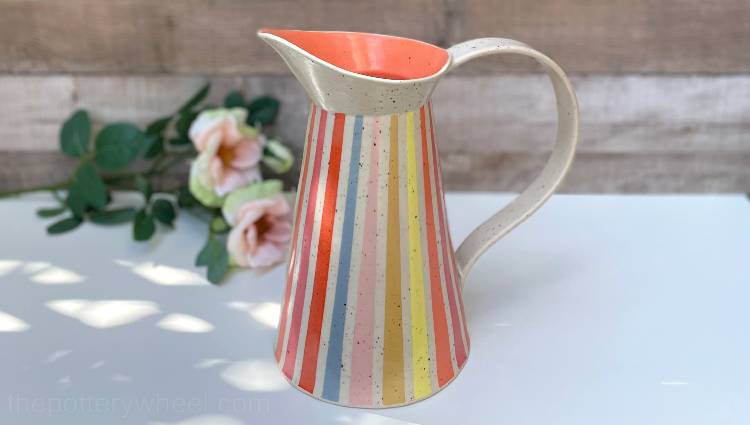Your cart is currently empty!
What is Fired Clay Called? – The 3 Main Terms For Fired Clay
Published:
Last Updated:
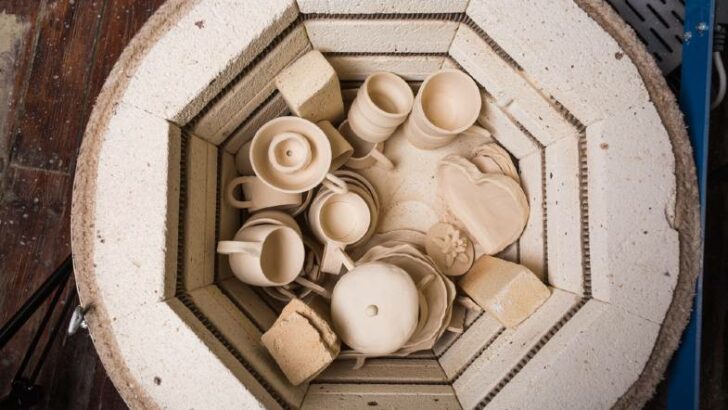
Affiliate Disclaimer
As an affiliate, we may earn a commission from qualifying purchases. We get commissions for purchases made through links on this website from Amazon and other third parties.
The world of clay is full of terms that might sound a bit odd when you first encounter them. If you are new to ceramics, you might have found yourself wondering ‘what is fired clay called?’ Here is an overview of three main terms that are used to refer to clay that has been fired.
Fired clay is either called ‘ceramic’, ‘bisqueware’, or ‘glazeware’. Clay is normally fired twice. After the first firing, the clay is called ‘ceramic’. The first firing is called the bisque fire, and the clay becomes bisqueware. The second fire is the glaze fire, and this clay is called glazeware.
The range of terms to use to refer to fired clay can be a bit confusing. So, let’s take a closer look at each one….
What is Fired Clay Called? A Closer Look
The three main terms used to refer to fired clay are ceramic, bisqueware and glazeware. If you’d like to look at one of these terms specifically, you can click on the link below. Or, you can read about each term in turn.
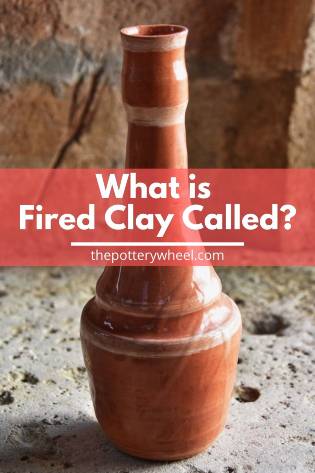
Ceramics
As stated above, clay is often fired twice when it is being made into pottery. The first firing is called the bisque fire. Before clay goes into a bisque fire, it is left to dry out. When it is as dry as it can be in the open air, it is called ‘bone dry clay’.
Once clay is bone dry it is ready to be fired for the first time. In its bone dry state, the clay is fragile and will break easily if handled carelessly. It is also water-soluble, so if you put bone dry clay in water it will dissolve. When clay dissolves in water, this is also known as ‘slaking down’.
When clay is bone dry, the only change it has undergone is that the water in the clay has evaporated. It’s worth mentioning that although the clay may feel completely dry, all bone dry clay contains some water. The water that evaporates as the clay dries is mechanical water. Mechanical water sits between the clay particles and is free to migrate to the surface of the clay. Once it reaches the surface of the clay it can evaporate.
Unfired clay also contains ‘chemically bonded water’, which doesn’t leave the clay as it dries out. This water is inside the clay particles and is only driven out by heat when the clay is fired.
What Happens to Clay When it’s Fired
When clay is fired for the first time, it undergoes a number of physical and chemical changes. The following changes happen gradually as the temperature in the kiln rises:
- The remaining mechanical water in the clay evaporates
- Organic matter in the clay burns away
- Water that is chemically bonded to the clay particles is driven out
- Chemical and mineral compounds are burnt off
- Sintering occurs, this is when the surface of the clay particle starts to bond together, and the clay becomes denser
As a result of these physical and chemical changes the fired ware turns from clay to ‘ceramic’. Unlike unfired clay, ceramic ware is hard, porous, and insoluble. Clay breaks down in water, whereas ceramic ware will absorb water but stay intact. Ceramicware will also shatter or break if it is dropped. This is because it is brittle and hard. By contrast, bone dry clay will crumble.
Bisqueware
Clay that has gone through the first firing or bisque fire is also called bisqueware. There are a few words that are used to describe bisque fired clay, and they all mean the same thing. Bisque fired clay is sometimes simply called ‘bisque’, at other times it is called ‘biscuit’ or ‘biscuit fired’.
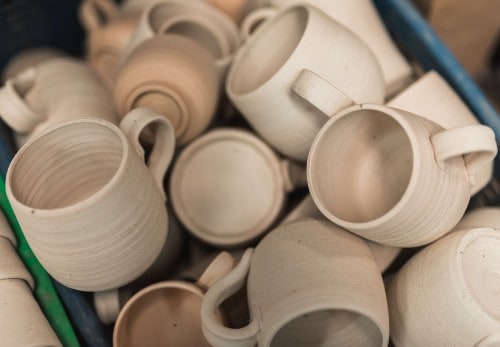
In addition to this, bisque ceramics are also called bisqueware or bisque ware. Although these words are spelled a little differently, they are taken to mean the same thing.
As explained above, bisque fired pottery is still porous. For that reason, bisque ware is not suitable to be used as functional ware, such as mugs and plates. If porous ceramics are used to hold liquid, the water will slowly seep into and through the ceramic wall. Also, with time, prolonged contact with water will weaken porous ceramics.
Porosity is one of the reasons why pottery is glazed. The glaze forms a glassy non-porous surface over the ceramic body. Also, during the glaze fire, some clay can itself become non-porous if it is fired to a high enough temperature.
Once a piece of ceramic is non-porous it becomes functional and can be used as dinnerware or a vase.
Are Ceramics Always Fired Twice?
However, not all ceramics need to be fired twice. For example, some sculptural work will just be bisque fired. After a bisque fire, sculptures can be given a non-glaze decorative finish that doesn’t need firing.
There is a long tradition of porcelain being used in an unglazed state for sculptural work. This is called ‘biscuit porcelain’, and has a delicate, matte finish. Think of the many portrait sculptures you might have seen from around the 18th and 19th centuries.
In addition to this, the bisque firing stage is sometimes missed out altogether. This is known as ‘raw firing’ or ‘single firing’. When pottery is raw fired, the glaze is applied to the unfired ‘raw’ clay, and then glaze fired.
However, most of the time, firing pottery happens in two stages, the second stage being the glaze fire. That is what we will look at next…
Glazeware
If ceramics are glaze fired then they are called glaze ware. Like bisque ware, there are a few different terms that are used to refer to glazed pottery. These terms are ‘glaze fired’, ‘glaze ware’, and ‘glazeware’. To complicate the matter further glaze firing is also sometimes called ‘glost firing’.
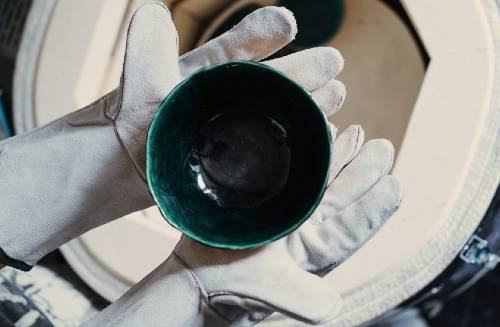
Not surprisingly, glaze ware refers to ceramics that have gone through the glazing process. Glazing involves applying unfired liquid glaze to the pottery surface and then firing it. When it is fired, the glaze, which contains glass-forming ingredients, melts and forms a glassy surface on the ceramics.
There are various different types of clay, the main ones being earthenware, stoneware, and porcelain. These different types of clay are glaze fired at different temperatures and have different properties once they have been fired. Nevertheless, all ceramics that have been glazed are called glaze ware or glazeware.
Final Thoughts on What to Call Fired Clay
The range of different names for fired clay might feel a little daunting when you start out. However, you will get a handle on the ‘lingo’ as you become more familiar with the pottery practices.
I remember the first time I spoke to a pottery supplier and feeling embarrassed to use the word bisque. It felt unfamiliar and weird, and as if I was speaking a different language. Like ordering a cup of coffee in a foreign language when you’re on holiday. But I’m now comfortable with the dialect and have good ‘conversational’ pottery speak!
If you have found yourself wondering ‘what is fired clay called?’, I hope you found this article helpful. In no time the range of different terms will become familiar, and like a second language.

